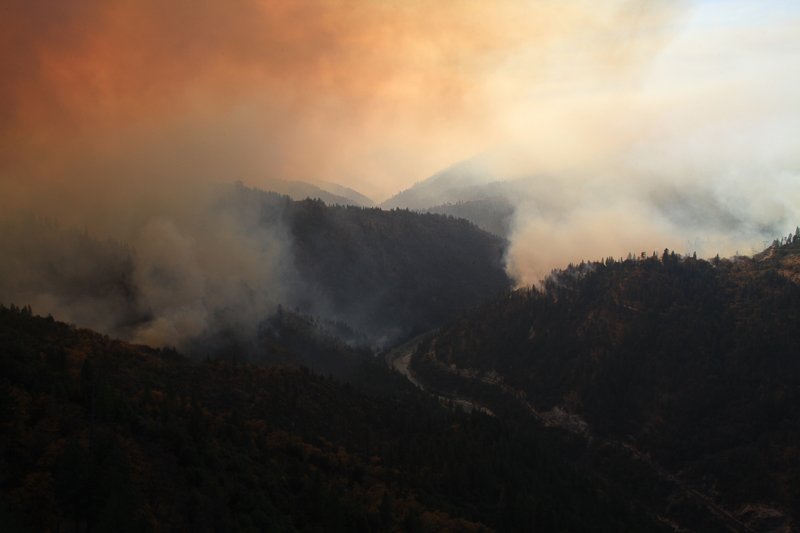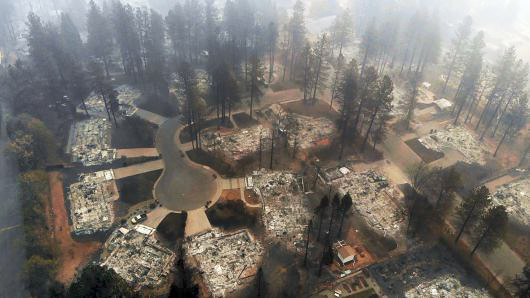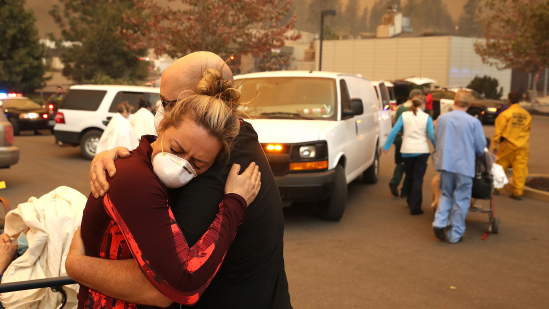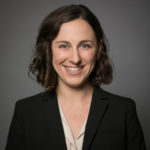How climate change and California’s wildfires changed the way I approach the future

By Maya Wolf, Two-Year MBA ’19
I grew up in rural Northern California, nestled between the Pacific Ocean to my left and the redwood forest to my right. I’ve strayed far from my childhood home over the years, from studying sustainable farming in Israel after college to attending business school at Cornell in another remote corner of the United States. Through each new move and life chapter, I have held on to a plan to one day return West and build my future family a house in the woods, complete with a garden and flock of chickens.
“You’ll be fine…there have always been wildfires”
The authors of the recent National Climate Assessment write that “successful adaptation [to climate change] has been hindered by the assumption that climate conditions are and will be similar to those in the past.” Last fall brought with it the most destructive wildfire in California history. The Camp Fire would have been unimaginable to most even after the Tubbs Fire just a year ago, which was then the state’s most destructive wildfire on record. The Camp Fire burned 153,336 acres (3x more than Tubbs) and 18,793 structures (2x more than Tubbs) that were built adjacent to and in the forest. As I see what climate change is doing to my state, I can’t help but think about its implications for my planned move back to California.

When I share these thoughts with colleagues and classmates, the most common response I receive is a dismissal. “You’ll be fine,” I am reflexively told. “Droughts come in cycles, it’s normal. And there have always been wildfires in the state.” What better example could there be of what the authors of the National Climate Assessment well understood: It is bitterly difficult for us as humans to understand and envision that the future will look radically different from the past.

Climate change in California has brought earlier snowmelt, an earlier dry season, and later summers. After a protracted years-long drought that ended in 2016, rains that returned in force and refilled reservoirs were almost immediately followed by another bone-dry summer, laying waste to the megablooms of plants and trees that the wet winter has sprouted across the state. The deadwood was perfect kindling for fire in 2018 after another drier-than-average summer extended into what should have been the start to the rainy season in October. These conditions were exacerbated by a second plentiful source of fuel: homes.
Smoke from the Camp Fire steadily blew southwest, at one point closing San Francisco schools and giving the city the unlucky designation of having the worst air quality in the world. (Even brief exposure to such high air pollution can leave lasting health impacts, but it’s worth noting that there are people across the world who have to go to work and to school in bad air quality year-round. No one should have to be exposed to dangerous air quality during their day-to-day activities.)
Bringing humans into a responsible, sustainable relationship with the environment
For weeks, I read harrowing accounts of couples’ highway car rides through flames to survive by the slimmest of margins and stories of overflowing church services to pray for the thousands of missing persons. I listened to the radio each day to hear updates to the list of casualties and for progress about the blaze’s containment.

Staring face-to-face with what climate change looks like helped me get in touch with what it feels like, uncovering that emotional connection that we know to be the basis for empathy and understanding. As I viewed photographs of formerly thriving neighborhoods razed to the ground, I mourned the end to the story I’ve been told since youth, about achieving a lifetime of comfort given enough effort. The years ahead, I felt in my stomach with each new casualty announced, will be challenging and uncertain.
But sometimes we need to go down to the bottom of the pit before we can see the light again. I’m coming to terms with what the future looks like, and in one small way, I’m changing my vision for my future life. It no longer involves building a house in the woods, as I’ve long dreamed. At this point, I still intend to build a house and I still intend to have a garden and a flock of chickens. But in the new version of my dream, I’ll find a plot of land elsewhere, away from imminent risk of burning and of fueling further flames.
My intention for my life and career has long been to bring humans into a responsible, sustainable relationship with the environment and its resources. My hope is that my new dream allows me to start to be part of this work in earnest. Instead of making decisions based on what made sense in the past, living despite the environment, I’m seeing and starting to make decisions based on the present and the future. As the environment and the world around us is changing, so, too, am I.
About Maya Wolf, Two-Year MBA ’19

Maya Wolf is president of the Sustainable Global Enterprise Club and an Environmental Finance and Impact Investing Fellow. Her professional interest lies in the role of the private sector in reducing waste and shepherding in a clean energy economy. She spent her summer as an MBA leadership program associate at Pacific Gas & Electric, working on the utility’s hydroelectric portfolio strategy. Maya previously worked in nonprofit fund development to stop water pollution in California and, earlier, to mobilize social enterprise executives to invest in clean energy technologies. She holds a Bachelor of Arts degree from Reed College.
